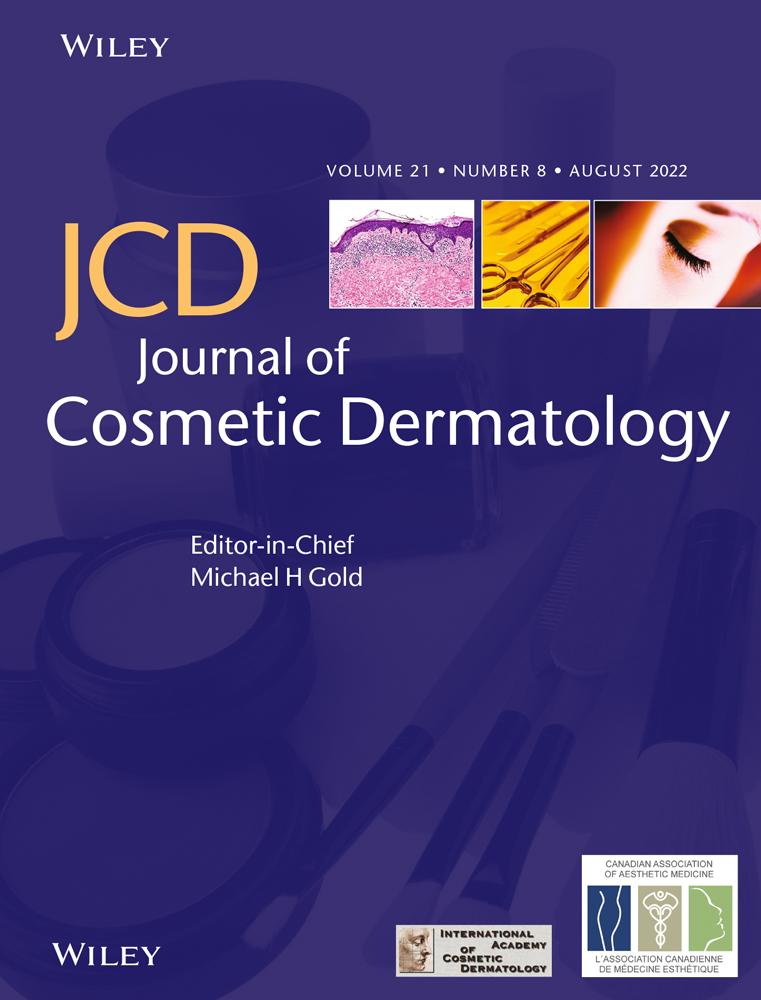30% supramolecular salicylic acid peels effectively treats acne vulgaris and reduces facial sebum
Lingzhao Zhang and Xinyi Shao contributed to this study equally.
Abstract
Background
Acne is a chronic inflammatory skin disease with high incidence and recurrence.
Aim
To study the efficacy of 30% supramolecular salicylic acid (SSA) in the treatment of acne, especially its effect on facial sebum secretion and the skin barrier.
Methods
Chemical peeling treatment with SSA using self-contrast was performed every 2 weeks for a total of four treatments in 25 patients. VISIA photographs and skin parameter measurements were recorded at every treatment, with a 2-week follow-up after the last treatment. We performed skin biopsy and immunohistochemical staining to detect sterol response element-binding proteins (SREBPs), fatty acid synthase (FAS), and cyclooxygenase 2 (COX2), which are important factors involved in the regulation of sebum metabolism.
Results
The global acne-grading system (GAGS) score of patients with acne decreased with 30% SSA treatment. The sebum level in the nose (p < 0.001), chin (p < 0.001), left cheek (p < 0.05), and right cheek (p < 0.05) improved significantly with increasing number of treatments. The T-zone sebum level (p < 0.001) improved more than the U-zone (p < 0.01). The VISIA index porphyrin score also reduced (p < 0.001). Skin hydration (p < 0.001), transepidermal water loss (TEWL) (p < 0.05), and pH value (p < 0.01)—reflecting the skin barrier—were also improved. Immunohistochemistry showed decreased expression of SREBPs, FAS, and COX2.
Conclusion
Peels with 30%SSA effectively treated acne and reduced facial sebum secretion without damaging the skin barrier. Reduction of sebum showed cumulative effect, which suggests that multiple 30%SSA chemical peels are beneficial to acne patients.




